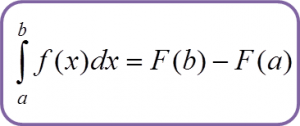Question 3:
Solution:
(a)
Given gradient function of a curve dydx=6x2−12xThe equation of the curve,y=∫(6x2−12x) dxy=6x33−12x22+cy=2x3−6x2+c−14=2(2)3−6(2)2+c, at point P (2,−14)−14=−8+cc=−6y=2x3−6x2−6
(b)
dydx=6x2−12xAt turning points, dydx=06x2−12x=06x(x−2)=0x=0, x=2x=0, y=2(0)3−6(0)2−6=−6x=2, y=2(2)3−6(2)2−6=−14d2ydx2=12x−12When x=0, d2ydx2=12(0)−12=−12 <0(0,−6) is a maximum point.When x=2, d2ydx2=12(2)−12=12 >0(2,−14) is a minimum point.
The gradient function of a curve which passes through P(2, –14) is 6x² – 12x.
Find
(a) the equation of the curve,
(b) the coordinates of the turning points of the curve and determine whether each of the turning points is a maximum or a minimum.
(a)
Given gradient function of a curve dydx=6x2−12xThe equation of the curve,y=∫(6x2−12x) dxy=6x33−12x22+cy=2x3−6x2+c−14=2(2)3−6(2)2+c, at point P (2,−14)−14=−8+cc=−6y=2x3−6x2−6
(b)
dydx=6x2−12xAt turning points, dydx=06x2−12x=06x(x−2)=0x=0, x=2x=0, y=2(0)3−6(0)2−6=−6x=2, y=2(2)3−6(2)2−6=−14d2ydx2=12x−12When x=0, d2ydx2=12(0)−12=−12 <0(0,−6) is a maximum point.When x=2, d2ydx2=12(2)−12=12 >0(2,−14) is a minimum point.









